How Dangerous is Tandem Skydiving?
Tandem Skydiving
Posted by: Skydive Palm Beach
1 year ago
While skydiving is at the top of many bucket lists, the assumptions surrounding the dangers of skydiving persist. But, is skydiving dangerous? We’re here to clear the air (pun intended) on the statistics of skydiving safety, risks of skydiving, and how we mitigate those risks at Skydive Palm Beach. So, just how dangerous is skydiving tandem? Let’s get all of these questions answered.
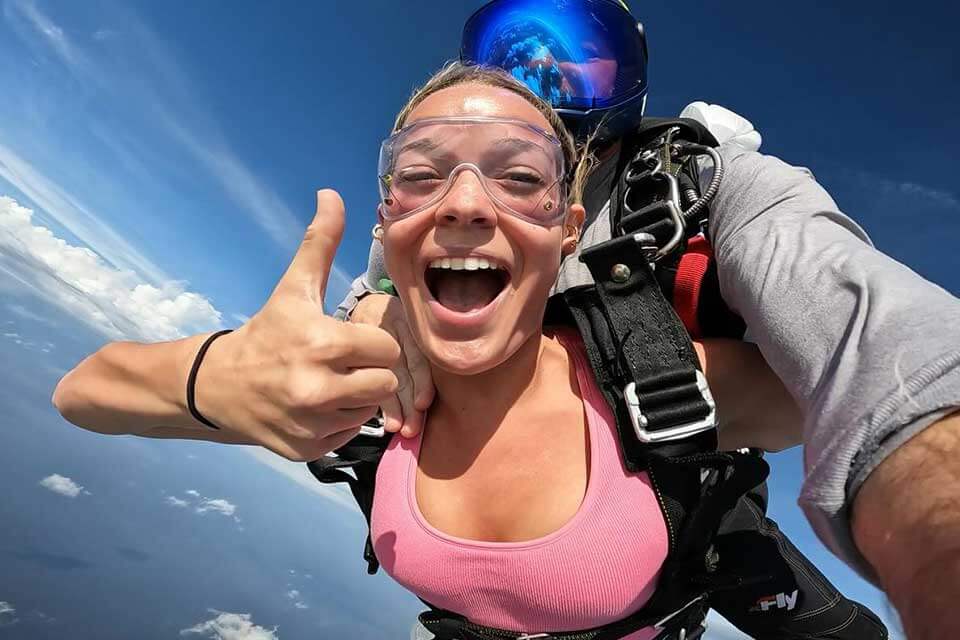
Is It Safe to Go Skydiving in Tandem?
Everything we do comes with a risk and nothing is really “safe.” As such, we would never say that skydiving is “safe” – you are jumping from an airplane thousands of feet in the air, after all! Just like any other extreme sport, skydiving is not “safe.” However, thanks to improvements in skydiving technology, instructor training, emergency procedures, and safety protocols – skydiving is statistically safer now than it’s ever been in skydiving history.
How Dangerous is Tandem Skydiving?
Skydiving is an inherently risky sport, and while many believe that equipment failure causes most skydiving accidents, the truth is that the majority are actually a result of simple human error.
Accidents involving equipment malfunctions are usually the result of the skydiver reacting incorrectly when performing prescribed emergency procedures. Most skydiving fatalities occur when highly experienced jumpers push their limits during a solo skydive. According to the USPA (United States Parachute Association), of the more than 3.65 million skydives made in 2023, 10 resulted in a fatality. To put that in more concrete terms, that’s a rate of about 1 fatality per 370,000 jumps.
If you’re wondering how many tandem skydives go wrong and how often people get hurt tandem skydiving, you will be pleased to learn that tandem skydiving statistics are even better than solo skydiving stats. In tandem skydiving, the average over the past 10 years has been 1 fatality per 500,000 jumps.
What Are the Dangers of Tandem Skydiving?
While tandem skydiving is statistically the safest way to enjoy skydiving, there are certain risks associated including weather conditions, equipment failure, instructor credentials, and preparedness best practices. However, strict safety protocols and procedures are in place to mitigate these risks.
We can’t control the weather, but we can certainly study it and make informed decisions. At Skydive Palm Beach, before every jump our team of pilots, ground crew, and our Safety & Training Advisor (S&TA) meticulously reviews the weather to determine if conditions are favorable for jump operations. This can be tricky because it is difficult to predict weather, but we always err on the side of caution. If conditions are deemed unfavorable, jumps are either postponed or canceled altogether.
Let’s take a closer look at equipment, credentials, and protocols.
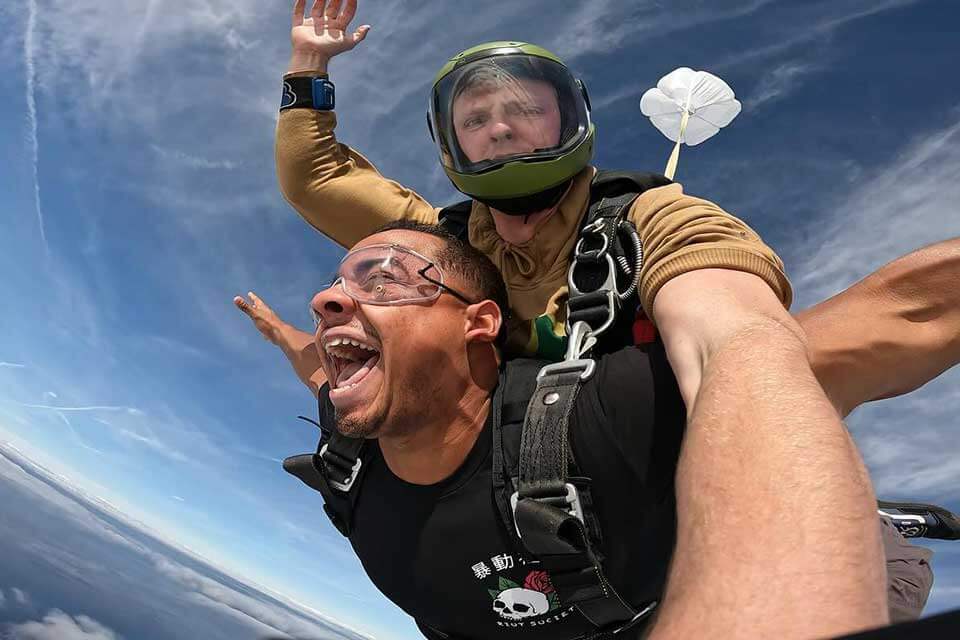
Improvements to Skydiving Gear: Modern Technology & Research
Modern skydiving gear is equipped with advanced safety features designed to enhance jumper safety. One feature is the Automatic Activation Device (AAD), a small electronic device integrated into the parachute system that automatically deploys the parachute at the appropriate altitude and speed should the skydiver be unable to deploy the parachute for any reason.
Additionally, each parachute system is equipped with a main parachute and a reserve parachute. The reserve parachute is a back-up parachute should the main parachute malfunction or any reason. The reserve parachute is inspected and packed by FAA-certified parachute riggers every 180 days, regardless of whether or not it has been deployed. The likelihood of a reserve parachute malfunctioning is statistically slim to none.
Furthermore, tandem skydiving equipment undergoes regular inspections and maintenance by FAA-certified parachute riggers to ensure its reliability and functionality.
Qualified Tandem Instructors: Rigorous Training & Certifications
One of the key factors contributing to the safety of tandem skydiving is the rigorous training and certification process of tandem instructors. These skydiving professionals must complete extensive training programs and meet stringent requirements set forth by the USPA. A tandem instructor must have:
- USPA D License (the highest attainable license)
- At least 500 jumps
- Minimum of three years of experience in skydiving
- FAA Class II Flight Medical Certificate
- Held a USPA Instructional Rating
Participant Preparedness: Emergency Procedures & Training
On a tandem skydive, students are not just along for the ride; they play an active role in the success of their skydive. Which is why each tandem student goes through proper training briefs that include detailed instructions on emergency procedures, how to exit the airplane, fly their bodies, and what to do when it comes time to land.
Participants are encouraged to communicate openly with their instructors and ask any questions they may have before the jump. By following instructions and remaining calm, tandem students can contribute to the safety and success of the tandem skydiving experience.
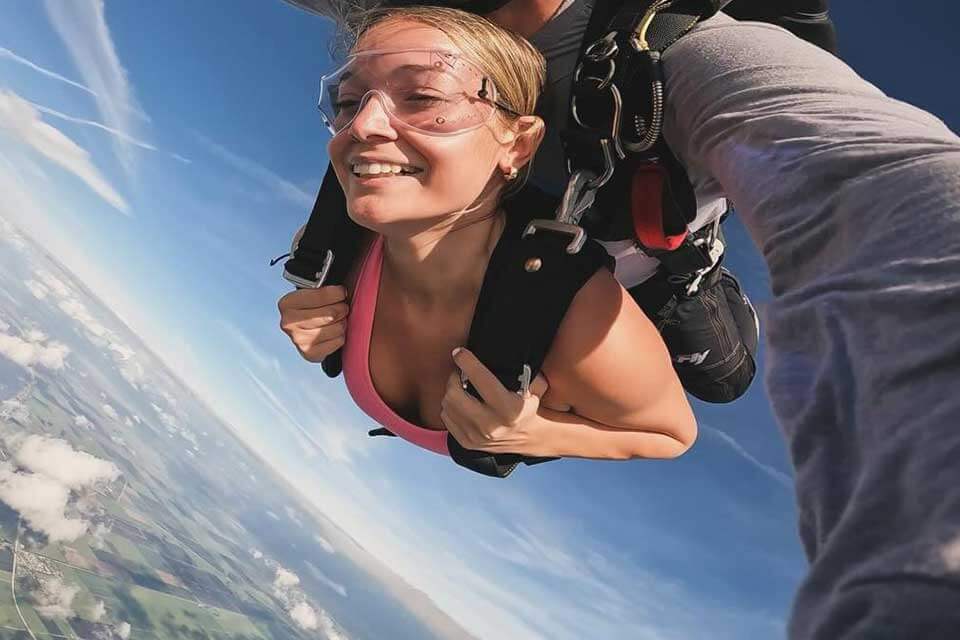
How Does Skydive Palm Beach Uphold Safety Standards?
- We only use top-of-the-line skydiving gear: At Skydive Palm Beach, we pride ourselves in using the best harnesses, parachutes, equipment and technology in the biz. Every inch of our skydiving equipment is thoroughly inspected and maintained by certified professionals to ensure proper functionality and quality.
- Our team of highly-trained and experienced instructors: At Skydive Palm Beach, our instructors have decades of experience combined. Our team of passionate skydivers are dedicated to providing the best experience possible for our guests. Each instructor has undergone rigorous training to become USPA-certified Tandem Instructors and is held to the highest standard by following our core values.
- Our meticulously maintained Cessna 182: Skydiving wouldn’t be possible without an airplane, so we treat our Cessna 182 with great care and respect. This workhorse of an aircraft can get you up to 10,000 feet in just about 15 minutes. With enough room for two tandem pairs, we transform your skydiving experience into a personalized, first-class treat. Our Cessna 182 follows all FAA protocols and is only maintained by certified aircraft mechanics.
- We follow strict safety protocols: We are a proud USPA member dropzone, which means we follow strict safety protocols laid out by the USPA and FAA. We uphold our safety standards by following standard operating procedures, having a zero tolerance policy for shenanigans, and adhering to weather policies if/when bad weather should roll in.
So, is it dangerous to skydive? Yes, skydiving and even tandem skydiving is dangerous and involves inherent risks; even after taking the necessary safety precautions, there is still a chance that something could go awry. It is all of our jobs to mitigate those risks as much as possible by following proper safety measures, training, maintaining equipment, and having the utmost dedication to safety to ensure an enjoyable experience for all.
By choosing a reputable skydiving center with certified instructors, like Skydive Palm Beach, you can feel confident that we will do everything in our power to ensure a successful and unforgettable jump. Come soar over the eye-catching vistas of South Florida with us and book a tandem skydive today! Blue skies, friends.
Categories:
You May Be Interested In:
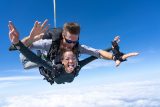
What Are The Differences Between A Tandem And Solo Skydive?
4 months ago by Skydive Palm Beach

What to Expect on Your Tandem Jump
5 months ago by Skydive Palm Beach
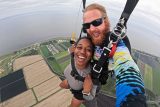
What It Takes to Become a Tandem Parachute Jump Instructor
8 months ago by Skydive Palm Beach
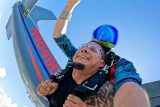
How Fast Do Tandem Skydivers Fall?
9 months ago by Skydive Palm Beach
